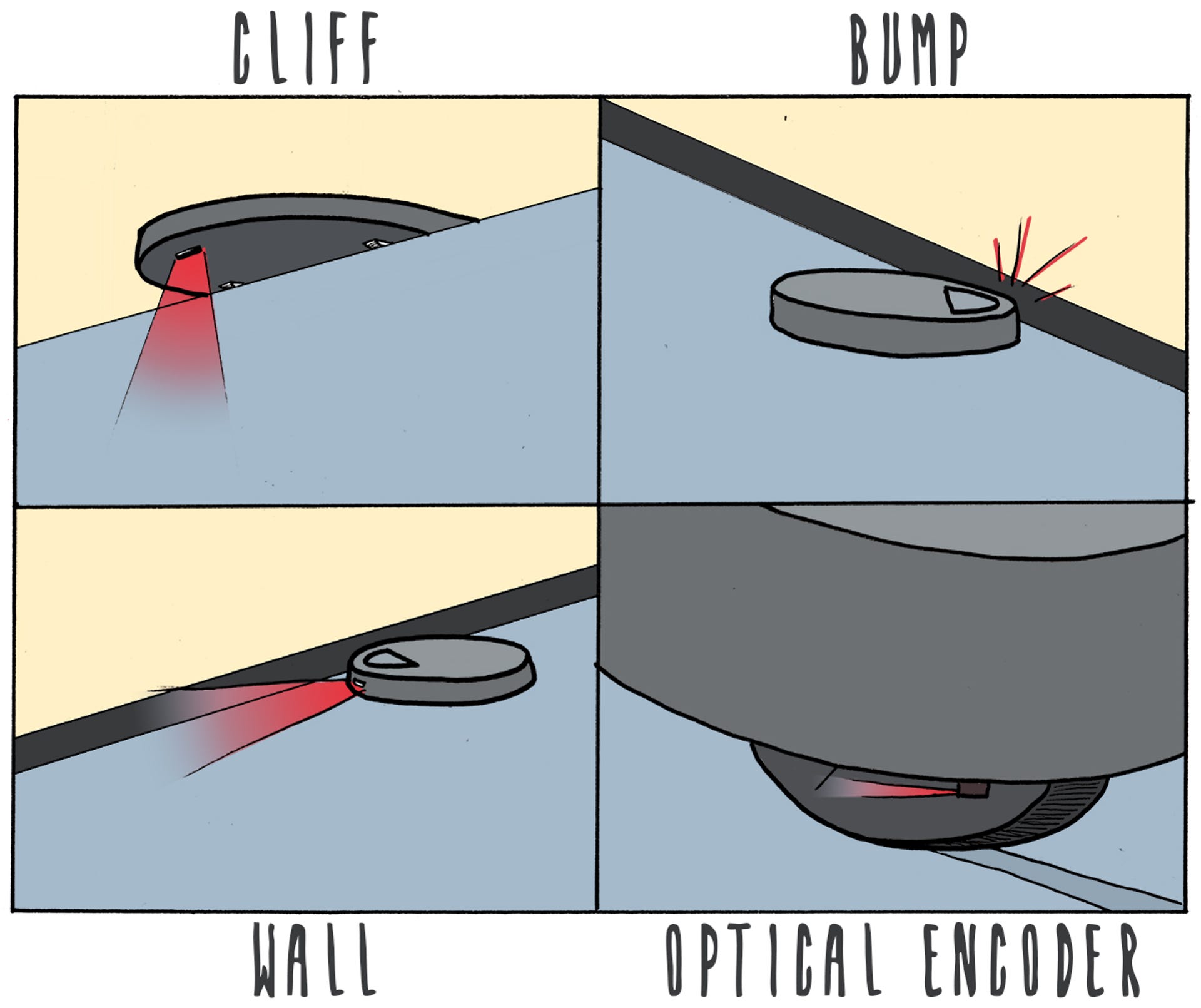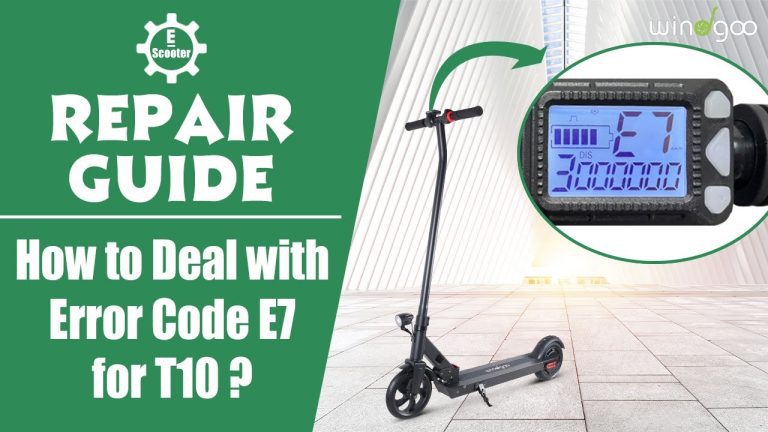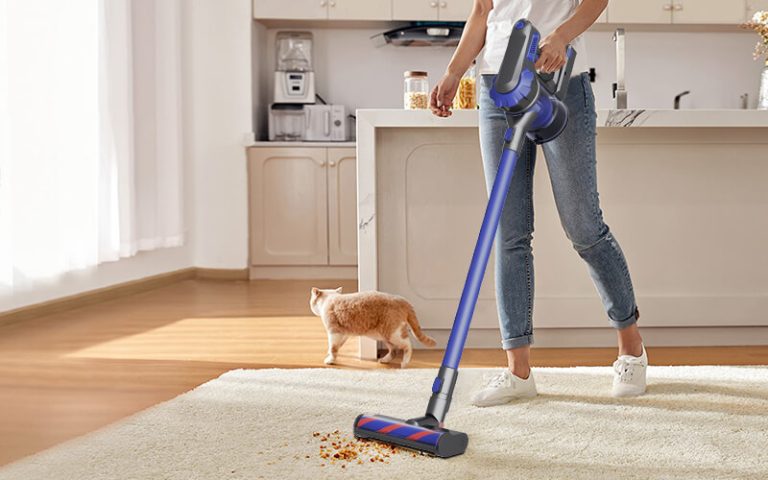How Does Robot Vacuum Mapping Work: Smart Navigation Revealed

Robot vacuum mapping works by using sensors and cameras to create a digital map of your home. This helps the vacuum navigate efficiently.
Robot vacuums have revolutionized home cleaning. They utilize advanced technologies to map your space accurately. Sensors detect obstacles and measure distances. Cameras capture images to aid in navigation. These features allow the vacuum to avoid bumping into furniture and getting stuck.
The digital map helps the vacuum plan the most efficient cleaning route. As a result, it covers every inch of your home, ensuring a thorough clean. This smart technology saves time and effort, making home maintenance easier. With robot vacuums, you get a cleaner home with minimal manual effort.

Credit: www.thezebra.com
Introduction To Robot Vacuum Mapping
Smart cleaning technology has changed how we clean our homes. Robot vacuums are now very popular. These devices can map rooms to clean better. They use cameras and sensors to do this. Mapping helps them avoid obstacles. It also helps them cover every part of the floor. This means less work for you. Your home stays clean with minimal effort.
Robot vacuums have several key components. These parts work together to clean your home efficiently. Here are the most important ones:
- Camera: Helps the robot see and map the room.
- Sensors: Detects obstacles and dirt.
- Brushes: Sweep up dirt and debris.
- Battery: Powers the robot for long cleaning sessions.
- Dustbin: Collects the dirt and dust.
Fundamentals Of Mapping Technology
Robot vacuum mapping uses sensors and cameras to create a detailed layout of your home. This technology enables efficient navigation, ensuring thorough cleaning while avoiding obstacles.
Types Of Sensors Used
Robot vacuums use various sensors to map your home. Infrared sensors detect objects by sending out light. Bump sensors help the robot know when it hits something. Laser sensors create a detailed map by measuring distance. Camera sensors take pictures to understand the room layout. All these sensors work together for accurate mapping.
From Raw Data To Maps
The robot vacuum collects raw data from its sensors. It processes this data to create a digital map. The map includes walls, furniture, and open spaces. Algorithms help the robot understand where it can and cannot go. The map is updated in real-time as the robot moves. This helps the robot clean efficiently and avoid obstacles.
Different Mapping Strategies
Random cleaning means the robot moves in no specific pattern. It can miss spots or clean the same area twice. Systematic cleaning uses a planned path. This ensures all areas get cleaned. Systematic cleaning is more efficient and saves battery life. Most modern vacuums use systematic cleaning.
SLAM stands for Simultaneous Localization and Mapping. It helps the robot create a map while knowing its position. Visual SLAM uses cameras to see and map the area. LIDAR-based mapping uses laser sensors for accurate mapping. These algorithms make the robot smart and efficient. They avoid obstacles and clean thoroughly.

Credit: next.gr
Smart Navigation Features
Robot vacuums use sensors to detect obstacles. These sensors can be infrared or ultrasonic. When the vacuum senses an obstacle, it changes its path. This helps the vacuum avoid bumping into furniture and walls. Some models even create a map of the room. They remember where obstacles are located. This memory helps them clean more efficiently in the future.
During cleaning, the robot vacuum makes real-time adjustments. It uses its sensors to detect dirt and debris. If it finds a dirty spot, it spends more time cleaning there. The vacuum updates its map while cleaning. This ensures it covers the entire room without missing areas. Smart algorithms help the vacuum decide the best path. This saves time and energy, making cleaning more efficient.
The Role Of Artificial Intelligence
Robot vacuums use artificial intelligence to navigate. They learn the layout of your home. Sensors help them avoid obstacles. They remember where furniture is placed. This helps them clean more efficiently. They can map rooms and pathways. This makes cleaning faster and easier.
Robot vacuums get better with software updates. These updates improve their mapping skills. They learn new cleaning patterns. Updates also fix any bugs. This makes them more reliable. Over time, their cleaning performance improves. They adapt to changes in your home. This ensures a thorough clean every time.
Comparing Robot Vacuums
Robot vacuum mapping utilizes advanced sensors and algorithms to navigate and clean efficiently. These devices create detailed maps of your home, ensuring thorough coverage. Enhanced mapping technology improves cleaning performance and reduces missed spots.
Factors To Consider
Robot vacuums differ in their mapping capabilities. Navigation technology is a key factor. Some use laser sensors, others use cameras. Battery life is also crucial. A longer battery means more cleaning time. Dustbin capacity varies; larger bins mean less emptying. Noise levels matter too. Quieter vacuums are better for homes with kids or pets. Price and warranty are also important. More expensive models often have better features. Always check the warranty for peace of mind.
Top Performers In Smart Navigation
Certain models excel in smart navigation. The iRobot Roomba i7+ is top-rated. It uses advanced mapping and can empty itself. The Neato Botvac D7 also ranks high. It has precise laser navigation. The Roborock S6 MaxV is another top performer. It uses AI for obstacle avoidance. Each of these models offers smart, efficient cleaning. They are suitable for various floor types and home sizes.
User Interaction With Robot Vacuums
Robot vacuums can avoid certain areas. This is done by setting up virtual boundaries. Users can use a smartphone app for this purpose. The app lets you draw lines on a map of your home. These lines tell the robot where not to go. This feature is very helpful. It stops the robot from entering rooms or areas you want to keep clean yourself.
Users can set cleaning schedules for their robot vacuums. You can choose specific days and times for cleaning. This can be done through the same smartphone app. The robot will start cleaning at the set time automatically. This is very convenient. You can come home to a clean floor every day. Custom schedules make life easier.

Credit: www.cnet.com
The Future Of Smart Cleaning
Robot vacuums are getting smarter every day. They use advanced sensors to navigate your home. These sensors help avoid obstacles. Laser mapping is a new technology in robot vacuums. It creates a map of your home. Artificial intelligence makes these vacuums even smarter. They learn the layout of your rooms. Voice control is another cool feature. You can tell your vacuum to clean specific areas. Automatic emptying helps keep the dustbin clean. Wi-Fi connectivity lets you control the vacuum from your phone. Scheduled cleaning ensures your floors are clean all the time.
Future homes will have fully integrated systems. Robot vacuums will talk to other smart devices. They will work with smart thermostats to clean when you are not home. Enhanced AI will make them even more efficient. Self-repairing features might come soon. Energy-efficient models will save power. Real-time updates will keep you informed. Customizable cleaning modes will suit every need. Voice assistants will make interaction easy. Safe and secure data handling will protect your privacy.
Conclusion
Robot vacuum mapping revolutionizes home cleaning. It uses sensors and algorithms to navigate efficiently. Understanding this technology helps users maximize their vacuum’s potential. Embrace smart cleaning solutions for a spotless home. Stay updated with the latest advancements for optimal performance.



